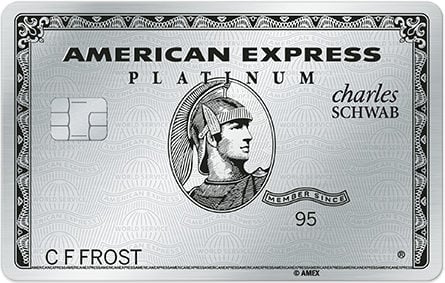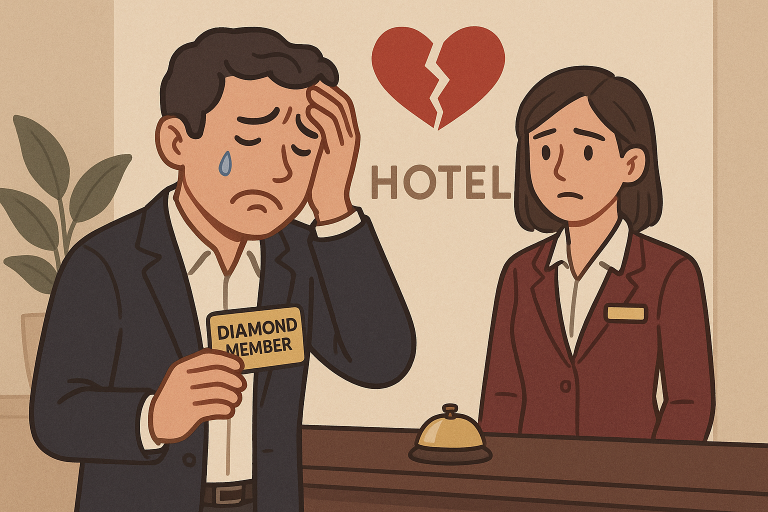
If you’re new to the world of credit cards, you might be curious about maximizing your spending power. As one of the major perks of being a cardholder, credit card points offer an opportunity to do just that – without changing much about your everyday purchases.
What Are Credit Card Points?
Credit card points are a rewards system designed to benefit cardholders who make frequent purchases with their card. By accumulating enough points over time, cardholders can exchange points for discounts on specific products or use them to pay down some credit card debt.
Depending on your credit card type, points can be earned on different purchases and at varying amounts. While one card might reward you for buying groceries, another might earn points for travel purchases.
Over time, you can use points you’ve built up to make additional purchases, pay down debt or redeem in other ways. These reward systems offer an excellent opportunity for savvy shoppers to maximize their spending power and save on the purchases they already make.
How are points calculated on a credit card?
Credit card points are calculated at an established rate per dollar spent. This rate can be higher on certain purchases, depending on what category bonuses your credit card offers.
Using a credit card to pay for a gym membership might reward you with one point per dollar spent. Meanwhile, that same credit card could offer 5:1 point earnings if you use it to buy your morning coffee. These bonuses vary from card to card but can also change monthly.
For example, one credit card might offer bonus rewards for purchases made at gas stations and Target during the spring months. During the summer, those categories could switch to restaurants and PayPal.
When you keep track of when bonuses become available, the right purchases can help you rack up rewards and stretch your dollar even further.
Generally, rewards are calculated at one cent per point. It might not seem like much, but after a few weeks of targeted spending, you’ll quickly see these reward programs’ advantages.
How much is 1000 points worth?
At a rate of one cent per point, 1,000 credit card points would be worth $10.
Best Ways To Earn Credit Card Points
Millions of cardholders use spend-to-save reward systems every day, but they earn their points in various ways. Let’s look at some of the best ways to earn credit card points – and see which fits your spending habits best.
Category spending
As mentioned above, different credit card companies reward you for making different purchases. By learning these categories, you can strategize your spending habits to earn points as quickly as possible.
Some common categories include purchases made with hotels, airlines, gas stations, and specific brand names.
It’s essential to familiarize yourself with the specifics of each category and how your card company sets the parameters for these purchases. Let’s say your card offers a 5:1 bonus on grocery spending, and you purchase your groceries at Walmart. It’s possible that your card defines Walmart as a department store and won’t reward bonus points for your grocery purchase.
Do your due diligence by checking your card company’s site to learn the exact bonuses you can expect to earn.
Referral bonuses
Category spending might be the most common way cardholders earn rewards, but there are ways to earn points without spending. Depending on your card, you might be able to boost your point count by referring others to sign up.
Suppose your card issuer offers referral bonus points. In that case, they’ll usually provide their customers a link that can then be sent to any friends and family who might be interested in signing up. If someone signs up using that link, the original cardholder gets points added to their account.
Like all credit card reward programs, the number of referral points earned depends on the card type. Your card company might also offer referral bonuses at different times of the year. So it’s a good idea to know when these opportunities become available.
Sign-up points
Many card companies use points as an incentive to encourage new customers to sign up. The catch is that you might have to hit a spending minimum for the sign up bonus to kick in.
This can be tricky if you’re already on a tight budget. Spending minimums are easy to hit, but paying it back with interest is another challenge. For example, if your card has a spending minimum of $3,000, you’ll have to pay off the balance within an established timeframe to claim the rewards. Failure to do so could leave you with more debt and defeat the purpose of credit card points entirely.
However, if your budget allows for the extra spending and your credit is in good enough shape, signing up for a new card can set you up with a solid amount of points from the start.
Rotating credit card rewards
For expert-level cardholders, rotating between multiple accounts can be the best way to boost your spending potential rapidly.
With just one credit card, you’ll only be able to earn points on the specific categories the issuer defines at a given time. While this still offers an advantage for long-term savings, there might be periods where the bonus categories don’t apply to your spending habits.
Rotating between multiple cards diversifies your point-earning potential by giving you access to rewards in a variety of categories. If one card offers a bonus for dining out, you can use it when getting dinner with friends. If another offers bonuses at gas stations, you’d use that one to fuel your car.
It’s important to remember that opening a new line of credit can lower your credit score. Before jumping in to earn as many points as possible, ensure your finances are stable enough for a new card.
Shopping through the credit card’s online portal
One of the best ways to ensure your purchases earn points is by shopping through your card issuer’s online rewards portal. Most major credit card companies allow customers to log in to a digital shopping center featuring the products or services that offer a rewards bonus.
Your card might offer more points for shopping through their portal than purchases from the brand’s website or brick-and-mortar location. By shopping through one of these portals, you can be confident you won’t miss out on any available points with the purchases you make.
Shopping portals also allows you to redeem your points in one convenient online location.
How To Redeem Credit Card Reward Points
Much like earning credit card points, redeeming those points can vary from company to company. Check out your issuer’s online portal to find out the specific redemption options available, check out your issuer’s online portal. These can usually be found on the company’s mobile app as well. When you do redeem your points, the rewards might be sent via a statement credit.
Statement credits are direct deposits credit card companies apply toward your account balance. When a statement credit is issued, you can use that money to make additional purchases or pay down your existing debt on that card.
If you plan to use statement credits to manage your account balance, make sure your card company includes them as a redemption option before signing up. For those struggling to keep up with interest payments, using a statement credit might be the best way to use credit card points.
Frequent flyers might prefer cards that convert points into travel discounts. Most major credit card issuers have brand partnerships with certain hotels and airlines, allowing their customers to leverage the rewards they’ve earned with those specific brands. For example, if your credit card issuer has a partnership with Hilton Hotels, you’d be able to use points y to cover the cost of an overnight stay.
Statement credits and travel rewards are popular redemption methods because of their potential for saving money. However, there are other ways of redeeming credit card points that, while less lucrative, can still be beneficial.
Other ways to redeem credit card points
Statement credits and travel miles might be worthwhile redemption options, but there are other ways to use credit card points that might benefit you more:
- Nonprofit donations: Some card companies allow you to convert credit card points into charitable donations for nonprofits.
- Gift card rewards: Rather than have your points directly deposited into your account as a statement credit; your issuer might allow you to get that money in gift card form.
- Partnering retailers: Companies may allow you to use points directly with their partnering brands. Log in to your card’s online portal to see if this option is available.
Do Credit Card Points Expire?
Most major credit card companies don’t have an expiration date on the points you earn. However, this isn’t always a certainty. Depending on your issuer’s terms and partnering brands, your rewards might not be redeemable after a particular time.
For example, travel miles earned via credit card purchases may expire if the airline chooses to set those limits. Depending on the brand, credit with department stores might also have an expiration date – or only be available on the credit card’s online portal for a limited time.
Other Types of Credit Card Rewards
The main thing customers look for when building their point portfolio is discounts, but those discounts can come in various ways. Let’s take a closer look at the different types of credit card rewards available to better determine which system works best for you.
Travel miles
Travel rewards usually apply to a narrower field of cardholders, but they can lead to significant savings for customers who travel often.
Credit cards for travel purchases reward customers with miles that can be exchanged for discounted airline tickets or hotel stays. These miles are usually earned at the same rate as points: one mile for every dollar spent.
However, certain cards might adjust their loyalty programs throughout the year and offer up to 5 miles per dollar. Once you’ve accumulated enough miles, they can be redeemed through partnering airlines or hotel chains.
Sometimes, points can be used for the same travel expenses. Take a look at what loyalty advantages your credit cards offer since they might offer a better discount than a travel credit card.
Cash back programs
A relatively recent addition to the world of credit card rewards, cash-back programs allow cardholders to convert the points they earn into money. This is usually received as a check, direct deposit, or additional credit awarded to the card.
Typically, cash-back credit cards provide 1% cash back on all purchases. The card company might offer significantly more money back on specific purchases like credit card points. Your card company might have a rewards partnership with a particular brand, like a chain of department stores offering 5% cash back when you shop with them instead of a competitor.
Unlike other rewards systems – like credit card points or travel miles – cash back programs allow the freedom to spend those refunds on any product you choose. Since you’ll receive cash instead of store credits, you won’t have any restrictions on using those savings.
What Is the Point of a Credit Card?
While racking up points can be a fun aspect of owning a credit card, you shouldn’t sign up for the sole purpose of earning rewards. The main point of credit cards is to boost your financial health and provide a convenient spending option when necessary.
It’s important to remember that any purchases made with a credit card require you to pay them back with interest. Making these payments on time can boost your credit score, but failing to do so can lead to debt that’s difficult to recover from.
Points, miles, and cash back are all exciting perks, but loyalty programs are designed to benefit cardholders who spend responsibly.
Spend Money, Make Money
If you’re looking to save a few bucks and have some fun doing it, the perks of credit card points can be exciting to explore. After a period of reasonable spending and on-time payments, you’ll quickly start to see the advantage credit card points provide.




